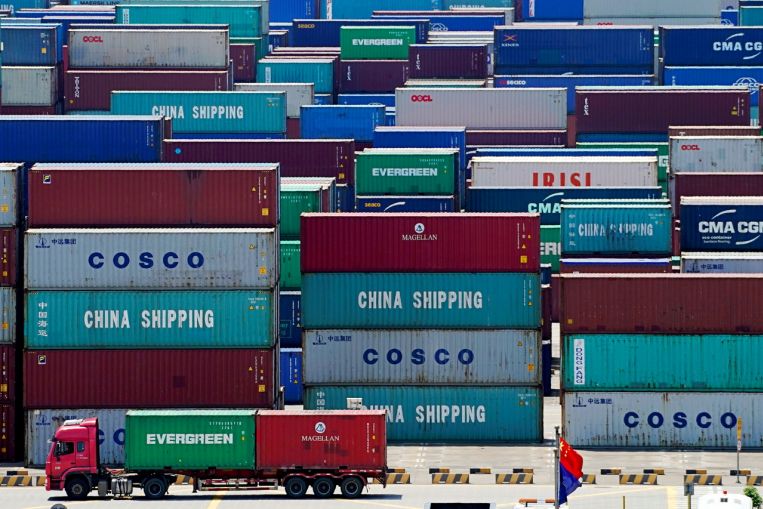BEIJING (BLOOMBERG)- China’s export growth beat expectations in October as foreign demand for its goods continued to surge, despite global supply chain disruptions.
Exports grew 27.1 per cent in dollar terms in October from a year earlier to US$300.2 billion (S$405.4 billion), data from the General Administration of Customs showed on Sunday (Nov 7). It was the 13th straight month of double-digit growth, and exceeded economists’ expectations of a 22.8 per cent gain.
Import growth quickened to 20.6 per cent year on year, leaving a trade surplus of US$84.5 billion.
China’s trade growth has remained well above pre-pandemic levels all year. Total exports this year till October have already surpassed all of 2020’s. That strength is providing support for a Chinese economy that is losing steam because of weak domestic demand caused by a real estate downturn, electricity shortages that have slowed industrial output, and cautious consumer spending worsened by sporadic outbreaks of Covid-19.
China’s strong export momentum will last at least for the next few months, according to a Bloomberg Economics analysis. But if consumers in developed economies continue to shift away from goods towards services consumption, and countries in South and South-east Asia resume factory production following pandemic-related shutdowns, demand for Chinese products could slow gradually.
Global trade in goods has been running at record levels this year as economies around the world recovered from virus-induced lockdowns in 2020. It had put strain on supply chains in many countries due to shortages of containers and ships as well as capacity at ports, including drivers who deliver goods to retailers.
The outlook for the supply chain crisis may be improving, as foretold by falling shipping costs. Machines and electrical products accounted for nearly 60 per cent of Chinese exports by value this year, the Customs department said. Labour-intensive products such as clothing and plastic products accounted for another 18 per cent.
Out of China’s major trading partners, exports to the European Union and the US have grown fastest this year, customs data showed. China’s trade surplus with the United States, a source of trade tensions between the world’s two largest economies, is 2.08 trillion yuan (S$439 billion) so far this year.
China is the world’s largest source of demand for most commodities because of its industries and construction-heavy economy. Demand for construction-related goods has slowed this year due to falling property investment, with iron ore imports down 4.2 per cent in the first ten months of the year, according to Customs data.
China has been scouring global markets for coal as it tries to reduce power cuts caused by a shortage of the commodity as well as surging demand for electricity especially from export-oriented manufacturers. China’s coal imports have risen 1.9 per cent so far this year, Customs said.
The government in recent days has warned of “downward pressure” on the economy and vowed measures to support domestic demand, including more supportive policies for small and medium-sized companies.
It has vowed not to use the property market to provide temporary stimulus, and the central bank has remained conservative, sticking to making short-term loans to keep interbank liquidity stable. Bank reserve requirements have been unchanged since July and policy interest rates have been steady since last year.













































